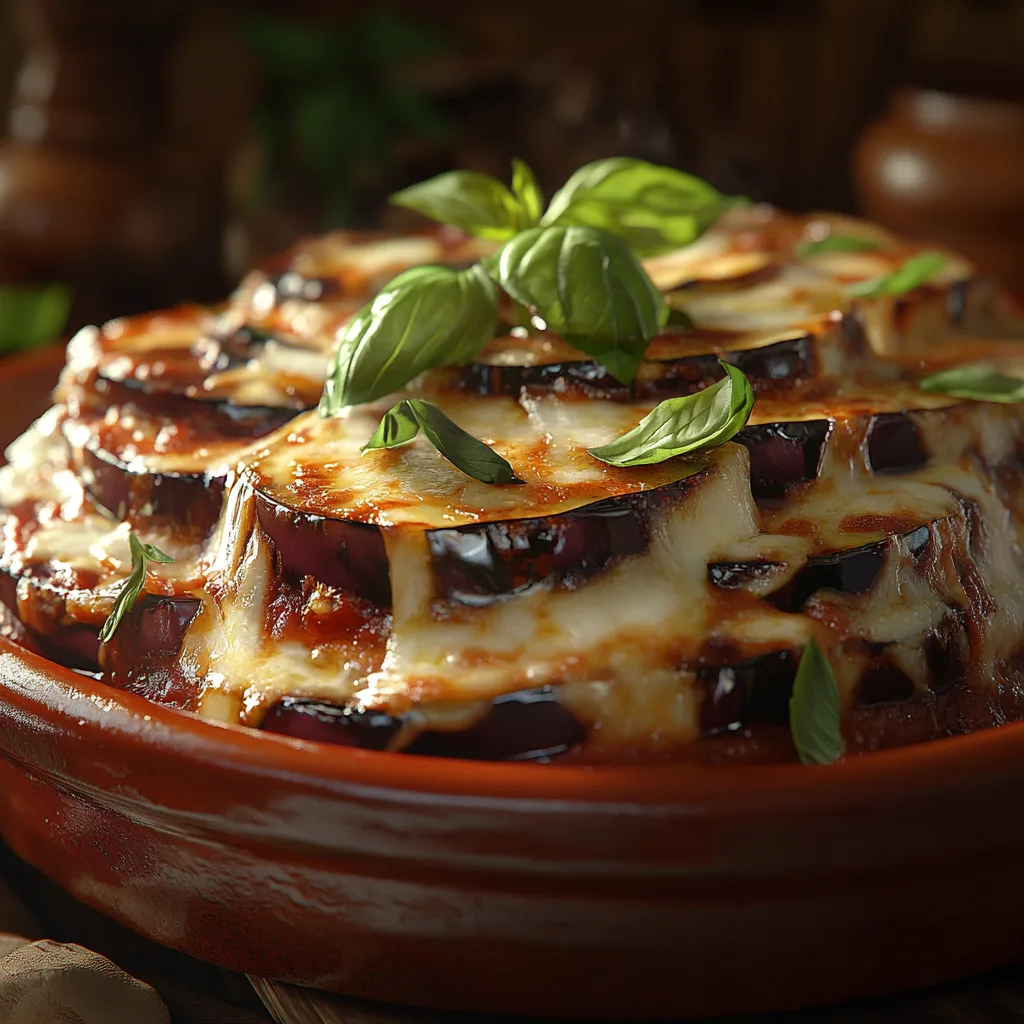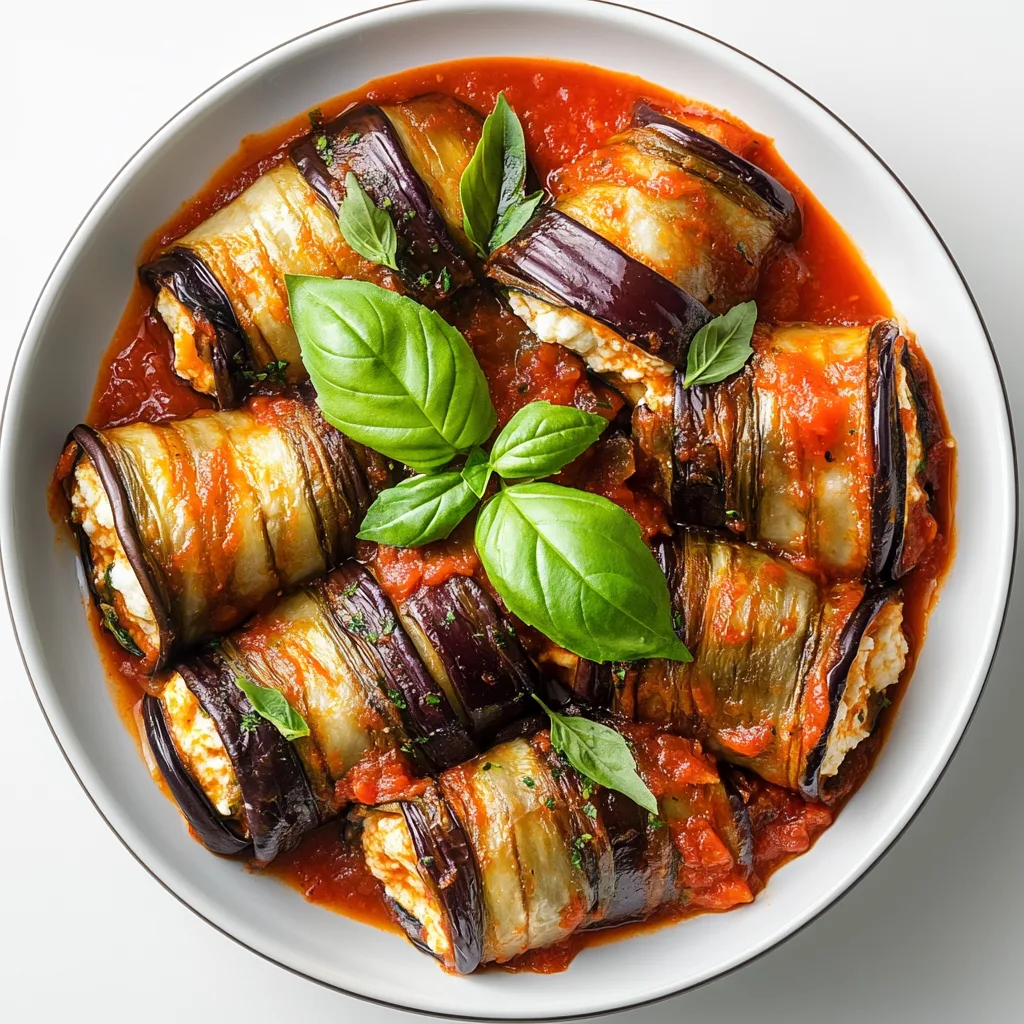Hey there, fellow food lovers! Are you ready to embark on a culinary adventure to the sunny shores of Italy, all from the comfort of your kitchen? If so, then you’ve come to the right place! We’re about to dive deep into the world of Italian eggplant recipes, exploring why this humble vegetable is a star in so many classic dishes. We’ll uncover the secrets to making them perfectly every time. Get your aprons ready because it’s going to be a delicious ride! Forget everything you think you know about eggplant because this guide will change your mind, especially about those mushy, bitter experiences. Let’s get cooking!
Print
Unlock the Soul of Italy: Heartwarming & Flavorful Eggplant Recipes
- Total Time: 1 hour 15 minutes
- Yield: 6-8 servings
- Diet: Vegetarian
Description
- Layers of fried eggplant slices, rich tomato sauce, creamy mozzarella, and fragrant parmesan cheese, all baked to perfection. A comforting and classic Italian dish.
Ingredients
- Eggplant (Italian variety, large)
- Salt
- Cooking oil (for frying)
- Tomato sauce (homemade or high-quality store-bought)
- Garlic
- Onions
- Basil
- Fresh Mozzarella cheese, sliced
- Parmesan cheese, freshly grated
Instructions
1. Slice eggplant and salt generously. Let it sit for about 30 minutes to draw out moisture.
2. Pat eggplant slices dry.
3. Lightly fry eggplant slices until golden.
4. Simmer tomato sauce with garlic, onions, and basil.
5. Layer ingredients in a baking dish: tomato sauce, fried eggplant, mozzarella, and parmesan.
6. Repeat layers, ending with sauce and cheese.
7. Bake until bubbly and golden brown.
8. Let rest before serving.
Notes
- Use fresh, high quality ingredients for the best results.
- Don’t overcrowd the baking dish.
- Let it rest after baking to meld flavors.
- Prep Time: 45 minutes
- Cook Time: 30-45 minutes
- Category: Main Course, Casserole
- Method: Baking, Frying
- Cuisine: Italian
Nutrition
- Serving Size: 1 slice/portion
- Calories: 450-600
- Sugar: 10-15g
- Sodium: 500-700 mg
- Fat: 30-40g
- Saturated Fat: 15-20g
- Unsaturated Fat: 10-15g
- Carbohydrates: 30-40g
- Fiber: 5-8g
- Protein: 15-20g
Keywords: Italian, Eggplant, Parmigiana, Baked, Vegetarian, Cheese, Tomato Sauce, Casserole
Why Italian Eggplant Recipes Are So Beloved
So, what’s the big deal with Italian eggplant recipes, anyway? Well, it’s not just about the flavors, it’s about the history, the culture, and the sheer deliciousness that has been passed down through generations. Italians have an incredible knack for transforming simple ingredients into culinary masterpieces, and the eggplant is a prime example. It’s not just a vegetable; it’s a blank canvas for culinary creativity. Think about it: from hearty baked casseroles to vibrant, saucy pasta dishes, eggplant adds a depth and richness that’s hard to match. And when it comes to Mediterranean cuisine, it’s one of the ingredients that makes it so special, don’t you think? Let’s explore what makes this versatile veggie so beloved in Italian kitchens.
The Magic of Italian Eggplant Varieties
First things first, let’s talk about eggplant varieties. It’s not just one type of eggplant that graces the Italian table! You’ll mostly encounter the classic, large, pear-shaped dark purple eggplant, which is what we generally call “Italian eggplant” here in the states. But Italy boasts a variety of local types, each offering slightly different textures and flavor notes. Some are longer and thinner, others are smaller and round, and they even come in shades of purple, white, and pink! The different varieties are like different artists’ brushes, each designed to create something unique. In most cases, for the recipes we’ll cover, the standard Italian eggplant is perfect, but understanding their differences can inspire you to get creative.
Flavor Profiles: What Makes Italian Eggplant Dishes Special?
Now, let’s delve into the taste. Italian eggplant dishes aren’t just about the eggplant itself; they’re about the harmonious blend of flavors. Imagine the smoky char of a grilled eggplant, mingling with the tangy sweetness of tomatoes, the pungent aroma of garlic, and the rich, creamy notes of mozzarella. It’s a symphony of flavors that dance on your palate. The beauty of eggplant is that it soaks up flavors like a sponge, making it a perfect vehicle for the bold and aromatic ingredients often used in Italian cooking. Olive oil, fresh herbs like basil and oregano, and a touch of red pepper flakes all contribute to the magic. The best part? It’s all about simplicity and balance, a core principle of Italian cuisine.
Essential Tips for Cooking Italian Eggplant Perfectly
Alright, now that you’re craving some delicious eggplant, let’s get down to brass tacks. Cooking eggplant perfectly isn’t as tricky as it might seem, but a few essential tips will make all the difference. Remember the first time you had a soggy, bitter eggplant dish? We want to avoid that at all costs! Here’s how you can get it right every time.
Selecting the Best Eggplant
First off, choosing the right eggplant at the store is crucial. You want a specimen that feels heavy for its size, with a smooth, shiny skin. Avoid eggplants that look wrinkled, have soft spots, or feel overly light, those are signs of it being too old. A fresh eggplant should feel firm when you give it a gentle squeeze. When you are choosing, think of it like choosing the perfect peach – it should be firm and unblemished. This small step ensures your eggplant is full of flavor and ready to soak up all the delicious sauces and spices you will be adding.
Prepping Eggplant: The Salt and Sweat Method
Okay, this is a game-changer. Many eggplant recipes call for salting the eggplant before cooking, often called the “sweating” method. Here’s why and how you do it: Eggplant contains compounds that can cause it to taste bitter, and it’s a water-heavy vegetable, and both of these factors can lead to soggy results. Slicing your eggplant and generously sprinkling it with salt draws out the excess water and bitter juices through osmosis. After about 30 minutes, you’ll notice little beads of moisture on the surface of the eggplant. Simply pat it dry with paper towels, and you’re good to go! It’s like giving your eggplant a spa day before it hits the kitchen. This process makes a huge difference, and it makes the eggplant more receptive to soaking up flavors during cooking.
Cooking Methods: Grilling, Baking, Frying, and Sautéing
Italian eggplant dishes come to life through various cooking methods, each imparting its own unique texture and flavor. Grilling will give your eggplant a smoky, charred flavor and soft interior, making it ideal for layering in dishes or adding to salads. Baking is perfect for when you want tender eggplant without a lot of oil, and it is also great for casseroles like Parmigiana. Frying, though traditionally done in many recipes, should be approached carefully to avoid ending up with greasy results. When using this method be sure to get your oil to the right temperature and drain the fried slices on paper towels. Finally, sautéing is a great way to get a quick and flavorful eggplant ready for sauces and fillings. Don’t be shy to experiment with these methods to see what you enjoy most!
Classic Italian Eggplant Recipe: Melanzane alla Parmigiana

Let’s get to the heart of Italian eggplant cooking: Melanzane alla Parmigiana. This is probably one of the most well-known and loved eggplant recipes, and for good reason! Layers of fried eggplant slices, rich tomato sauce, creamy mozzarella, and fragrant parmesan cheese, all baked to perfection – can you think of anything more comforting? It’s a true Italian classic. It’s one of those recipes that just feels like a warm hug. “Parmigiana is not just a dish; it’s an experience.”
Step-by-Step Guide to a Perfect Parmigiana
Let’s break it down. First, prepare the eggplant by slicing it and salting it for about 30 minutes. After patting it dry, lightly fry the slices until golden, being mindful of not over frying them. In a separate pan, simmer your tomato sauce with garlic, onions, and basil. Next, it is time to layer everything! Begin by spreading a thin layer of tomato sauce on the bottom of your baking dish. Then, layer the fried eggplant, tomato sauce, mozzarella slices, and a generous sprinkle of parmesan. Repeat this process until you use up all of your ingredients, ending with the sauce and a final layer of cheese. Bake it in the oven until bubbly and golden brown. The magic happens in the oven!
Tips and Tricks for the Best Results
For the best Parmigiana, it’s essential to use good-quality ingredients. Fresh mozzarella, ripe tomatoes, and freshly grated parmesan are key! Also, make sure you don’t overload the baking dish – it should be filled, but not overflowing, to avoid a soggy casserole. Finally, let it rest for a bit after baking. This allows the flavors to meld and makes it much easier to serve. Trust me, patience is a virtue when it comes to Parmigiana.
Beyond Parmigiana: Exploring More Italian Eggplant Dishes
While Melanzane alla Parmigiana is undoubtedly a star, Italian cuisine has so much more to offer when it comes to eggplant. So, let’s journey beyond the classic and explore other delicious ways to enjoy this versatile vegetable. Who knows? You might discover a new favorite!
Caponata: Sweet and Sour Sicilian Delight
Caponata is a sweet and sour eggplant stew from Sicily. This dish is a symphony of flavors that can be enjoyed as an appetizer, side dish, or even as a condiment. It is packed with eggplant, celery, olives, capers, and a sweet and sour agrodolce sauce. The contrasting flavors and textures make Caponata a truly unique and addictive dish. It’s like a vibrant explosion of Sicilian sunshine in every bite! It’s best served at room temperature or even cold, which makes it a perfect make-ahead dish.
Eggplant Involtini: Elegant and Delicious Rolls

Eggplant Involtini are thinly sliced eggplant slices that are rolled around various fillings, typically ricotta cheese, herbs, and parmesan, then baked in tomato sauce. They’re not only delicious, but also incredibly elegant! It’s a lovely way to present eggplant, making it suitable for special occasions or a fancy dinner. They’re relatively easy to prepare and look impressive on any table. These rolls will certainly impress your guests and make you look like a pro!
Pasta alla Norma: A Sicilian Classic with Fried Eggplant
Pasta alla Norma is another famous dish from Sicily, and it’s a must-try for eggplant lovers! It consists of pasta tossed with a rich tomato sauce, fried eggplant cubes, ricotta salata, and fresh basil. It is the perfect example of simple, fresh ingredients coming together to create something extraordinary. This pasta dish is all about freshness and balance. The fried eggplant adds a great texture, while the ricotta salata brings a salty tang. It’s a perfect example of the beauty of Italian simple cooking.
Common Problems and Solutions When Cooking Italian Eggplant
Let’s face it, cooking with eggplant isn’t always smooth sailing. Even the most experienced cooks can run into a few common problems. But fear not! We’re here to tackle those challenges head-on and provide you with solutions to ensure your eggplant dishes turn out fantastic every time. From bitterness to sogginess, we’ve got you covered.
Why Is My Eggplant Bitter?
Ah, the dreaded bitter eggplant! It’s a common complaint, but thankfully, easily avoidable. Bitterness in eggplant is often caused by compounds called solanine. The good news is, the “salting and sweating” method we discussed earlier is your best weapon against bitterness! By drawing out the excess water, you also draw out those bitter compounds. If you skip the salting, you’re rolling the dice! Also, choosing younger, smaller eggplants may help as they tend to be less bitter than older, larger ones. Remember, a little bit of prep work goes a long way in making your eggplant more palatable. It’s like removing all the obstacles before you start the race, ensuring a smoother cooking experience.
Eggplant is Too Soggy: How To Avoid It
Soggy eggplant is another common pitfall, and it’s usually due to too much moisture. As we mentioned earlier, the “sweating” process is crucial in removing excess water, and that will help make sure your eggplant doesn’t turn out soggy. But also, if you fry your eggplant, ensure the oil is hot enough and don’t overcrowd the pan, which lowers the temperature and results in the eggplant absorbing more oil. When baking eggplant in a sauce, make sure it’s not overly saucy or the eggplant will just turn mushy. Patting it dry after the “sweating” process will make all the difference, and also try baking or grilling your eggplant to avoid this problem.
Dealing with Oily Eggplant
If you’re frying eggplant, there’s a high chance it might absorb a lot of oil, leaving you with greasy results, which can happen even with great care. A key trick is to make sure your oil is at the right temperature. If it’s not hot enough, the eggplant will soak up oil like a sponge. After frying, always place the slices on paper towels to absorb any excess oil, and don’t crowd your pan because that will reduce the oil temperature. If you want to avoid fried eggplant, you can try baking your eggplant, which is a healthy and delicious alternative. Remember, it’s all about finding that perfect balance!
Creative Twists and Variations for Italian Eggplant Recipes
Now that we’ve mastered the basics and solved some common problems, let’s get creative! Italian eggplant recipes are incredibly versatile, so don’t be afraid to experiment and put your personal touch on these classic dishes. There’s no limit to what you can do when you let your creativity flow!
Vegetarian and Vegan Options
Eggplant is a fantastic choice for vegetarian and vegan dishes. You can create a hearty and satisfying meatless meal by simply omitting the cheese and substituting it with plant-based alternatives. For a vegan Parmigiana, use plant-based mozzarella and a cashew-based parmesan. When it comes to fillings for Involtini, use a mix of lentils, mushrooms, and vegetables to create a flavorful plant based option. And for pasta alla norma, try adding some roasted nuts to compensate for the cheese flavor. The options are endless when you have an open mind.
Adding Meat: Enhancing the Flavor Profile
While eggplant shines in vegetarian dishes, it also pairs incredibly well with meats. Consider adding ground beef or Italian sausage to your tomato sauce for a richer and more robust flavor. You can use it as a filling for the Involtini, or adding it to the layers of Parmigiana. In this case the eggplant acts as the perfect canvas to incorporate even richer flavors to your meals, creating a symphony of textures and tastes! Remember, balance is key!
Spice It Up: Exploring Different Herbs and Spices
While traditional Italian recipes often stick to basil, oregano, and garlic, don’t hesitate to explore other flavors! A touch of red pepper flakes can add a pleasant kick, while smoked paprika will add depth. Fresh thyme or rosemary can also complement the eggplant beautifully. Experimenting with different herbs and spices is a fun way to personalize your recipes and make them your own. It’s like giving your dish a new personality!
Serving and Pairing Suggestions for Italian Eggplant Dishes
You’ve cooked up a fantastic Italian eggplant dish, now what? It’s time to think about how to serve and pair it to make it even more memorable. The right side dishes and drinks can really elevate your meal and make it an unforgettable experience. Let’s explore some perfect pairings.
Perfect Side Dishes
When it comes to side dishes, keep it simple and fresh! A light green salad with a lemon vinaigrette is a great choice to cut through the richness of eggplant dishes. Roasted vegetables like zucchini, bell peppers, or asparagus also pair well, adding a medley of colors and flavors to your table. Crusty Italian bread is a must-have to soak up all the delicious sauces, and it also complements the textures of any Italian eggplant dish. Don’t underestimate a simple side dish to complete your meal.
Wine Pairings
Choosing the right wine can enhance the flavors of your Italian eggplant recipes. For richer dishes like Parmigiana or dishes with meat, a medium-bodied red wine like Chianti or Montepulciano is a great choice. These wines have enough acidity to balance the richness of the dish without overpowering the flavor. For lighter dishes like Caponata or Pasta alla Norma, a crisp white wine such as Pinot Grigio or Vermentino will be perfect, complementing the freshness of the vegetables and adding a nice touch. Remember, wine pairing is a matter of personal preference, so don’t be afraid to experiment and discover your favorite combinations.
Expand Your Italian Feast: More Culinary Adventures Await
While we’ve explored the wonderful world of Italian eggplant, the culinary landscape of Italy is vast and varied. If you’re looking to expand your Italian feast beyond eggplant, there are countless other dishes to discover. For a quick and satisfying meal, consider exploring these last minute dinner ideas with quick pasta, offering a range of speedy and flavorful options. Or perhaps you are looking for something creamy and comforting, in that case, you should explore this creamy cheesy chicken alfredo recipe, for a delectable experience. If seafood is your preference, why not try your hand at this ultimate branzino recipe, that will surely impress your guests? And if you want to explore plant-based dishes you should check out these easy and tasty vegan kabocha squash recipes, for a delightful and healthy meal. Italian cuisine truly offers something for every palate and occasion, so go ahead and continue exploring the many flavors that this amazing cuisine has to offer!
Conclusion: Embracing the Versatility of Italian Eggplant
Wow, what a delicious journey we’ve been on! From the basics of selecting and prepping eggplant to exploring classic and creative recipes, we’ve covered a lot. Italian eggplant recipes are a testament to how simple ingredients, when treated with care and creativity, can be transformed into incredibly satisfying dishes. Whether you’re a seasoned chef or a beginner cook, I hope this guide has inspired you to explore the world of Italian eggplant.
italian eggplant recipes is more than just a vegetable; it’s a canvas for creativity, a flavor sponge, and a star of many classic dishes. It’s versatile, adaptable, and it’s incredibly delicious. So go ahead, try out these recipes, put your spin on them, and most importantly, have fun cooking! I promise you’ll never look at eggplant the same way again.
